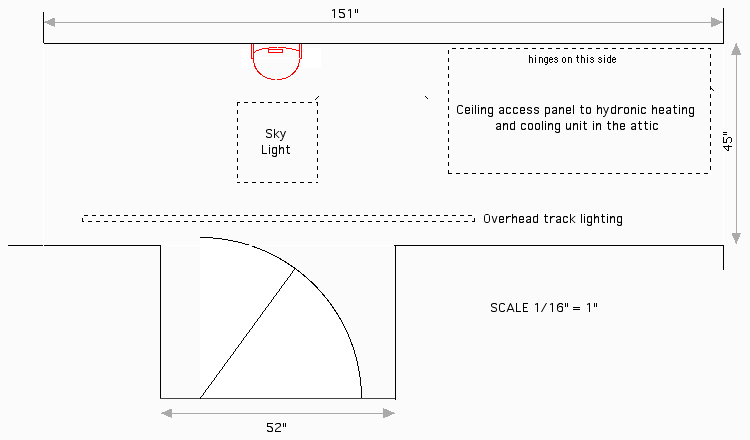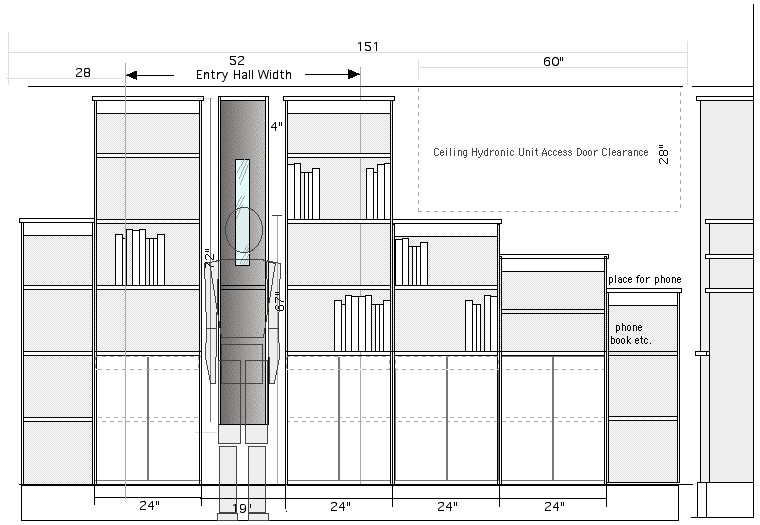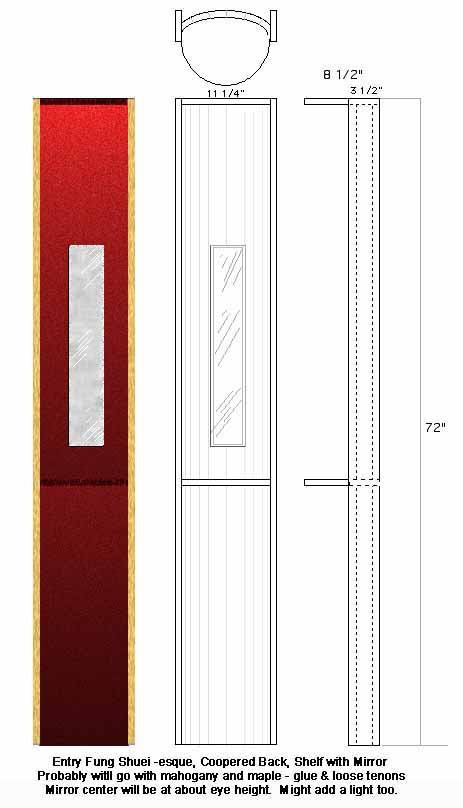DESIGN CRITERIA
This is going to be the first thing you see when you walk in my front door, hung on a navajo white hallway wall directly opposite the door -with a skylight above it, centered on the hallway width and the entry way width. Lots of natural light. The overhead track lighting will allow for illumination at night. I plan on building shelves and cabinet units along the remaining parts of this wall so this piece will be framed by them later.
So here's the context for this piece.

And here's the elevation with the future cabinets- details of which remain to be worked out.

The tall narrow, bevel edged mirror will be about one third to one half the width of the coopered back - and centered vertcially at about eye level - for a woman - somewhere between 5'2" and 5'8" .
The total height of the piece will be about 6 feet, leaving about 1 foot above and below the piece ( 8 foot ceiling height )
The mirror will be mounted on a stand off from the coopered back so that it appears to float in the air,
A shelf below the mirror will be curved to go with the coopered back and set high enough to reflect a plant or flower in a small vase (probably a turned wood "weed pot" ) sitting on the shelf.
The whole piece will be hung on a french cleat of some sort so that it appears supsended about a foot off the hardwood floor. This eliminates the need to work out any kind of base for the piece because the design doesn't lend itself to any kind of base. It will also make it easier to get to the Dust Bunnys that seem to like hiding under things placed along a wall.
The coopered component will be a darker wood - probably mahogany, as will the shelf. I could go with Claro Walnut, but it would probably be too dark - and finding quarter sawn walnut is difficult. I'dneed QS because walnut often has a very prominent grain/figure. Mahogany is perfect for this application since it has a warm reddish brown tone andit works so nicely - hence it being called The King of Woods.
The coopered "back" will be in two 3 foot tall parts. with the shelf hiding that fact. I'm going with two 3 foot sections because it's easier and usualy less expensive to find two short wide boards of mahogany than one 6 footer - especially in 11 to 12" widths that will be needed.
The sides will be english sycamore to frame the coopered middle element with a lighter wood. The english sycamore will be closer in color to the navajo white wall but dark enough to frame the piece. If the grain on the visible edge of the "frame" is prominent - think tiger maple - I may use an oil finish or even a dye to pop the grain. This will darken the wood a little but not significantly. On the other hand, that might be distracting - I'm going for a simple, sparse Zen look.
Not sure if I'm going with a "top" for this piece. The Dodd Piece has a stepped top and bottom with a shallow top and bottom "lip". That look is a little too formal for what I have in mind. I want to be able to hide how this piece was put together - and hung - so I, or someone else, will know how to take it down if need be. So I'll probably go with a top it off shelf - notes in a ZipLok bag taped to the top.
I may turn an element to attach to the underside of the small shelf - or not.
